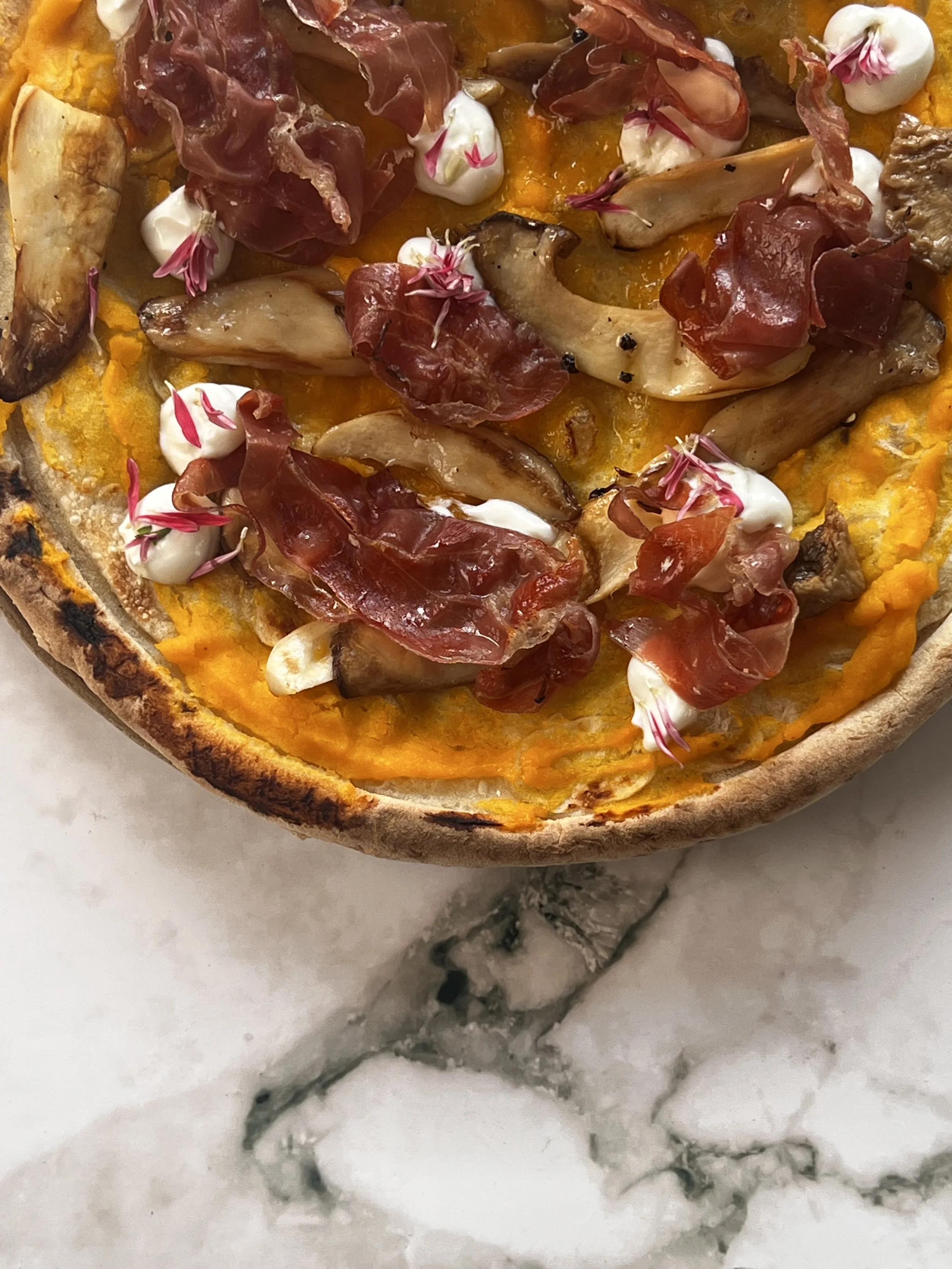Fall's Hidden Profit Margin: Seasonal Pumpkin Pizza Beats Year-Round "Premium" Toppings
How smart seasonal buying transforms your bottom line
Your food costs are killing your margins while the best-tasting, most profitable ingredients are sitting right in front of you for three months every year.
Hokkaido pumpkin isn't expensive luxury - it's seasonal opportunity. When pumpkins are everywhere in fall, prices drop 60-70% below spring rates, flavor peaks naturally, and customers actually want what you're serving.
This pumpkin pizza shows how seasonal menu development creates better food costs, happier customers, and easier kitchen operations all at once.
Why You should go Seasonal
Most restaurants fight seasonality instead of using it. You pay premium prices for out-of-season tomatoes in January while ignoring the fact that November pumpkins taste better and cost less than anything else you could put on pizza.
The Real Numbers:
Fall pumpkins: 0.80 Euro -1.20 per kg
Spring "fresh" pumpkins: 3.50-4.00 Euro per kg
Year-round frozen: 2.20 per kg (with zero flavor)
The Hokkaido variety concentrates natural sugars through cold weather exposure. You literally cannot buy this flavor intensity any other time of year, at any price.
The Technique To Make Seasonal Works
Pumpkin Cream Base Roast whole pumpkins at 240°C until flesh pulls away from skin easily. Puree while warm, season with salt and white pepper. This becomes your sauce base - no tomatoes needed.
The natural sugars caramelize during roasting, creating sweetness that balances everything else on the pizza. You're not adding sugar - the season is doing the work for you.
Goat Cheese-Mascarpone Blend Mix 60% fresh goat cheese with 40% mascarpone. The goat cheese cuts through pumpkin sweetness while mascarpone adds richness without competing flavors.
Apply in small dollops across the pumpkin base - you want pockets of creamy contrast, not uniform coverage.
Crispy Parma Ham Integration Thin-sliced prosciutto crisped in a dry pan until edges curl. The salt and crunch balance the creamy base while the rendered fat adds depth.
Grilled King Oyster Mushrooms Quick grill over high heat to remove moisture and develop char flavors and mariante after that. Keep marinate in a hugh salty percentage brine (in soy sauce for instance) to ensure longer shelf life. These provide earthy notes that ground the sweetness and prevent flavor fatigue.
Storage & Saves Time Money
Seasonal Cost Advantages: Fall pumpkin abundance drives costs down precisely when customers expect pumpkin flavors. You're buying premium ingredients at commodity prices.
Storage Benefits: Whole pumpkins store 2-3 months in cool, dry conditions. Buy in volume during peak season, use through winter. Your November purchase powers January sales at October prices.
Cross-Menu Applications: Pumpkin puree works for soups, pasta sauces, dessert bases, and cocktail ingredients. One seasonal purchase serves multiple menu applications.
Labor Efficiency: Roast pumpkins during slow periods, freeze in portions. Assembly time is faster than complex pizza preparations - just base, cheese dots, protein, and garnish.
Commercial Recipe Development
For Restaurant Operations: Seasonal menus aren't harder to manage - they're easier. When ingredients are naturally abundant, supply chains work better, quality is higher, and costs are lower.
Menu Rotation Strategy:
September: Introduce as "new fall offering"
October-November: Feature as signature seasonal item
December-January: "Last chance" positioning before seasonal end
February: Archive until next fall
Staff Training Benefits: Simple ingredient combinations with clear seasonal timing reduce complexity. New staff learn one technique that works for the entire fall season.
The Customer Psychology Advantage
Seasonal Expectation Alignment: Customers want pumpkin flavors in fall. You're selling what they already decided to buy, instead of convincing them to try something unexpected.
Value Perception: "Seasonal special" commands higher prices than "regular menu item" even when ingredients cost less. Scarcity creates perceived value.
Menu Excitement: Limited-time offerings create urgency and repeat visits. Customers return because they know the season is finite.
Pizza Menu Development Seasonal Framework
Timing Strategy:
Early September: Staff training and prep system setup
Mid-September: Soft launch to test operations
October-November: Full promotional push
December: Value positioning as season ends
January: Final offerings before menu rotation
Pricing Approach: Position as premium offering despite lower ingredient costs. Customers pay for seasonal experience, not ingredient expense.
Menu Development Services Seasonal Benefits
Competitive Differentiation: While competitors use frozen, processed, or out-of-season ingredients, your seasonal approach creates authentic flavor advantages they cannot replicate without changing their entire purchasing approach.
Brand Positioning: Seasonal menus communicate quality awareness, ingredient knowledge, and culinary expertise. Customers recognize restaurants that "get" seasonality.
Marketing Opportunities: Seasonal stories write themselves - local harvest connections, traditional fall flavors, limited-time exclusivity. Content marketing becomes easier and more authentic.
Recipe Engineering for Seasonal Success
Prep System Design:
Bulk roasting during low-volume periods
Portioned freezing for consistent availability
Simple assembly procedures for busy service
Clear dating systems for quality control
Quality Maintenance: Proper storage extends seasonal ingredients throughout the usage period while maintaining peak flavor characteristics.
Scaling Considerations: Seasonal volume purchasing requires storage space planning and usage rate calculations. Success requires matching purchase quantities to realistic usage timelines.
Smart Seasonal Business
The Real Innovation: Understanding that working with natural seasons instead of against them creates operational advantages, cost benefits, and customer satisfaction simultaneously.
Long-term Strategy: Seasonal menu development builds customer anticipation and repeat business. People remember restaurants that serve the "best pumpkin pizza" and return each fall.
Competitive Advantage: Most restaurants ignore seasonality or handle it poorly. Mastering seasonal ingredients creates differentiation that's difficult for competitors to replicate without systematic changes.


